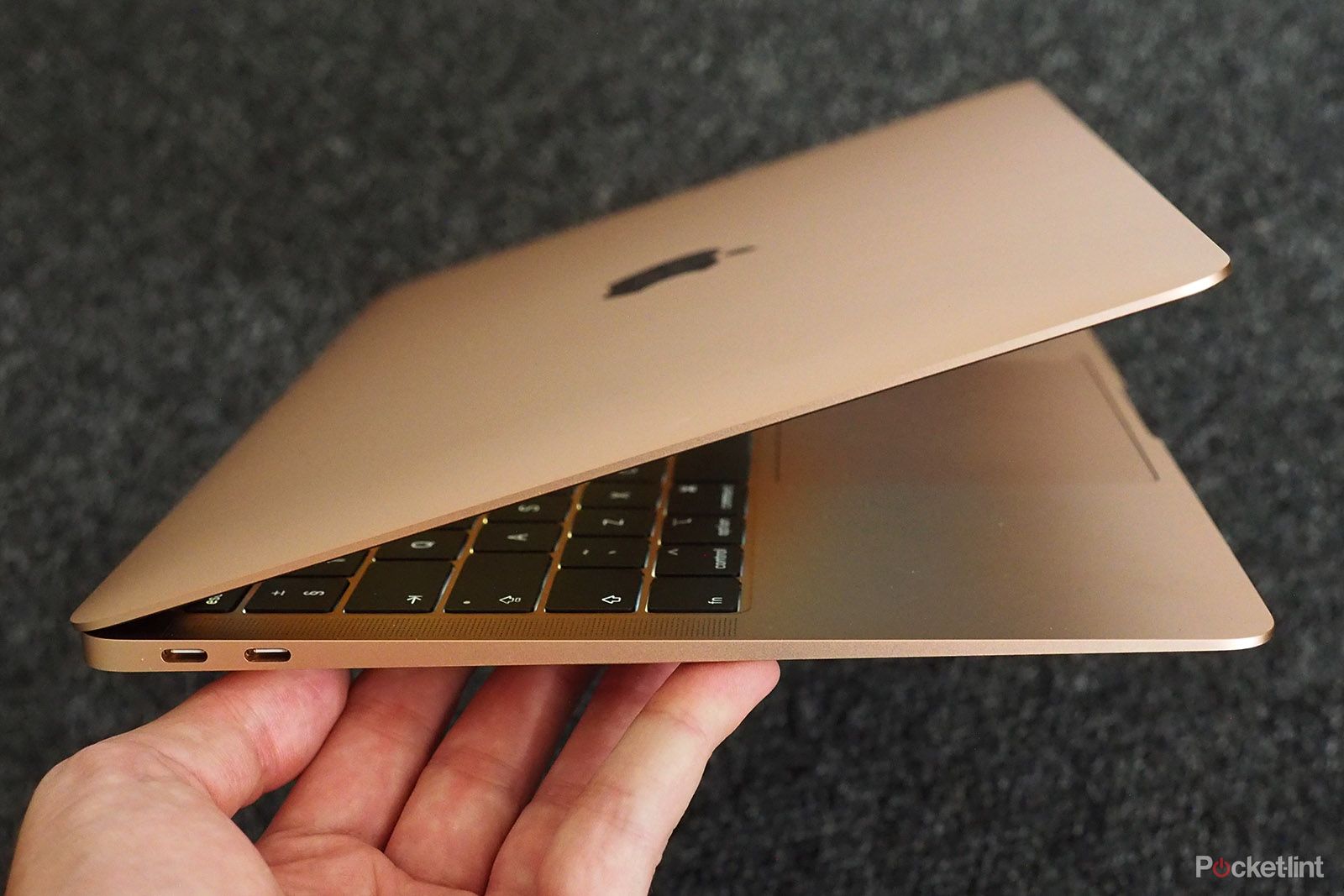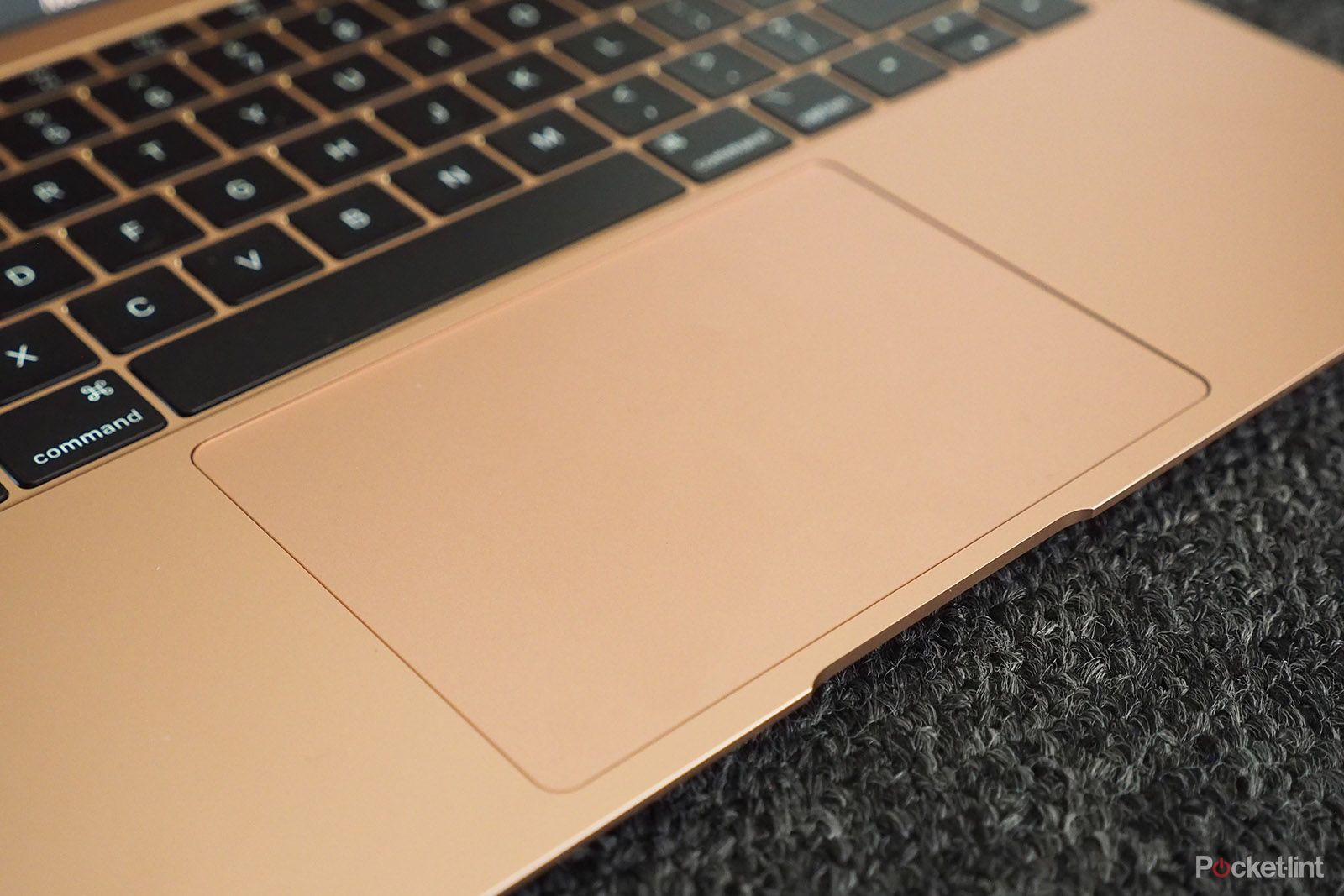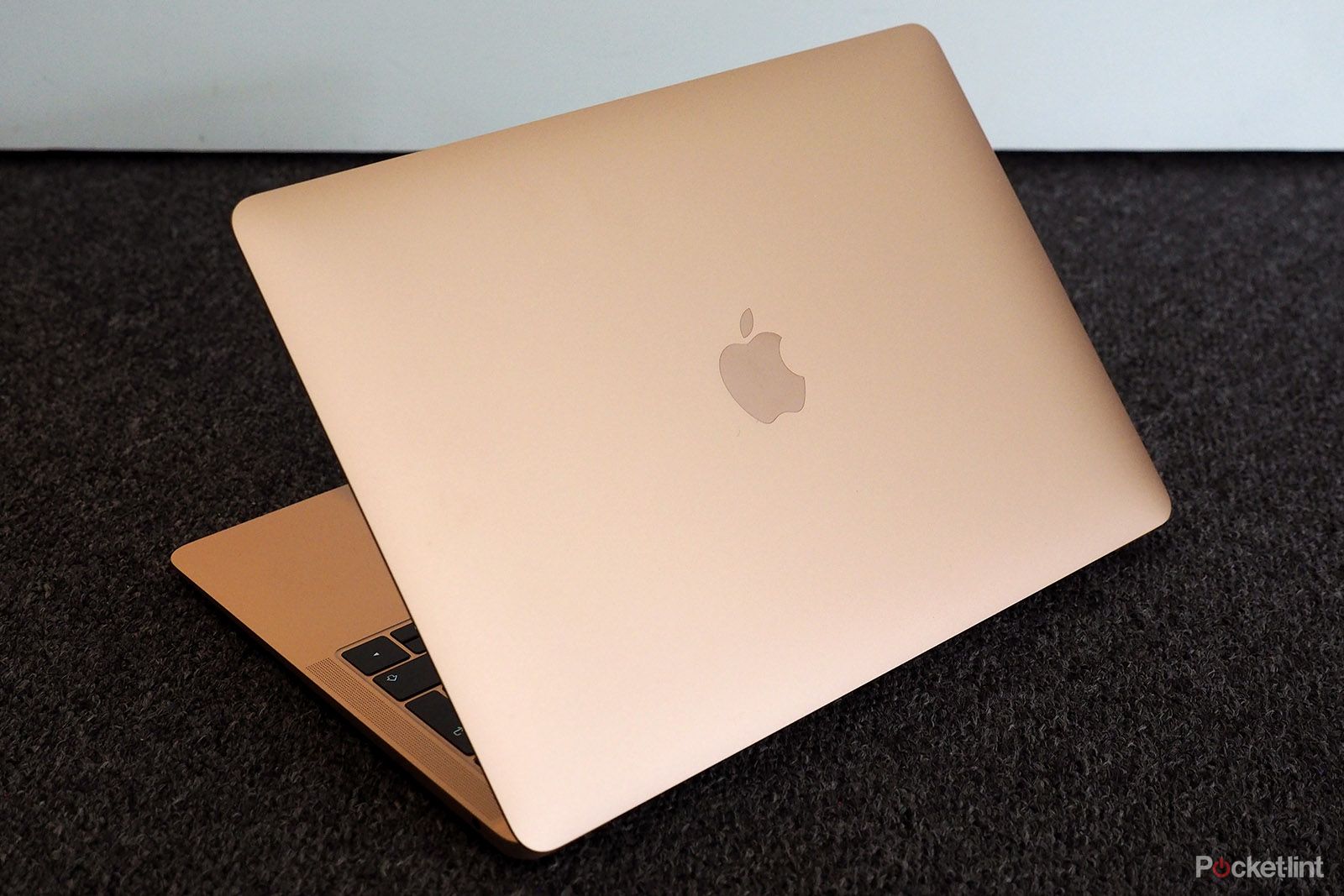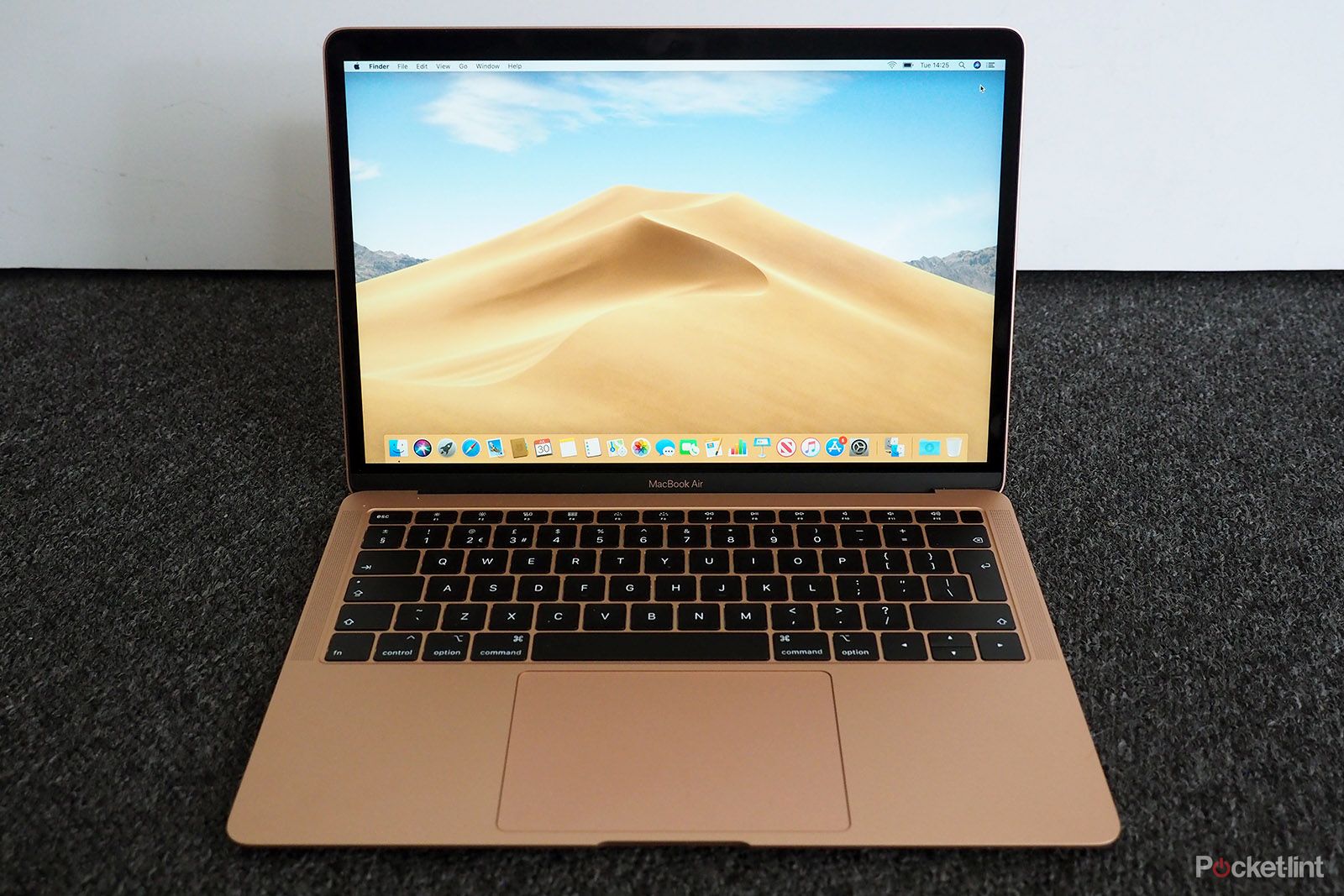You know what they say about the butterfly effect: one action results in an equal opposite somewhere else. Maybe that's why when Apple dropped its latest 13-inch MacBook Air to market – complete with, bombshell, a price drop compared to the previous year – the 12-inch MacBook vanished as a result. Pfft, up it went in an imaginary puff of smoke, probably with that very same onomatopoeic sound.
Anyway, it was a wise move: the 2018 MacBook Air was at odds with the same year's MacBook thanks to a total redesign, both fighting it out for space. For 2019 that's no such problem: the new Air is the smallest, lightest and, um, 'most affordable' Mac laptop you can buy. It is still £1,100 at its entry-level point, mind, so it's hardly cheap, but it's more competitive and better aligned in the market than it has been for some time. Indeed, it's almost like the new default.
It's also one of the new models to address a whole other kind of butterfly effect: with ongoing keyboard issues related to Apple's 'butterfly mechanism', the Air, along with the new MacBook Pro models, utilises a new material in the scissor mechanism that's designed to substantially reduce non/mis/double-presses. Add that to the addition of Apple's True Tone display technology and, of course, that welcome price reduction, and do we have a laptop winner on our hands?
Our quick take
The MacBook is dead, long live the MacBook Air! This 2019 version does some key things: in the absence of the 12-inch MacBook, the Air is a far better proposition; the price is £100 lower than the previous year, keeping it more competitive; the keyboard doesn't suffer the extent of issues its predecessor did; and the nice-to-have addition of True Tone display technology is welcome. All that makes for a more balanced entry-level Mac laptop.
Is the 2019 Air the perfect slice of on-the-go laptop life though? Not quite. There are inevitable irks: the limited ports (we'd love to see an SD card slot again); the sheer loudness of the typing experience; the absence of Face ID login; the not class-leading bezel sizes; and the expensive upgrade costs for expanded storage (an essential for us) all add marks against its score sheet.
But what might otherwise look like an almost non-upgrade of its 2018 predecessor is quite a lot more. The 2019 MacBook Air has settled into life; it's graduated and waved goodbye to its younger MacBook brother, fixed up its keyboard wrongs in the process of growing up, and becomes an altogether more acceptable workhorse than before.
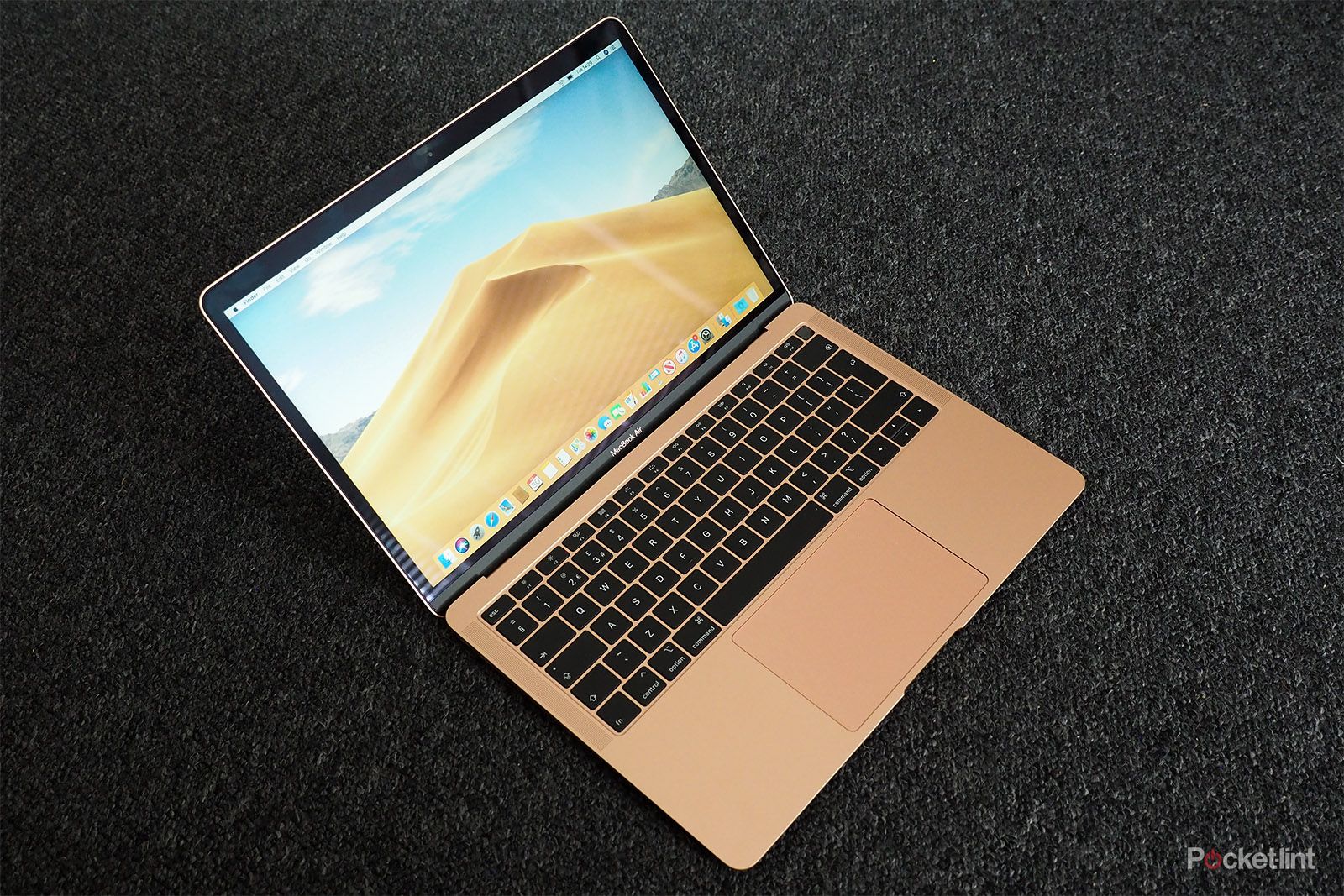
Apple MacBook Air (2019) - 4.0 / 5
| FOR | AGAINST |
|---|---|
|
|
Apple MacBook Air 13-inch (2019)
Design & Display
- Available finishes: Gold (as pictured), Space Grey, Silver
- 13.3-inch 'Retina display (2650 x 1600 resolution)
- Adds True Tone technology for adaptive colour
- 2x USB-C/Thunderbolt 3 ports
- 3.5mm headphone jack
- 15.6mm thickness
- 1.25kgs
We've been using the MacBook Air for the previous three generations. Not quite four: we didn't buy a 2018 model, as our now older-looking 2017 model should survive for three years of non-stop use. Thing is, when looking at this brand new Air, dressed in its Gold finish (love it or hate it, we know it'll divide opinion), it's impossible for our six-year-old-styled model to not look hugely out of date.
Part of that's down to the bezel. The surround on the latest 13.3-inch screen is considerably less than the generation it replaced, which helps the current Air sit in among its Windows competition more successfully. Still, Apple isn't the 'winner' in this department; the Air doesn't have the smallest bezels going, with the likes of Dell, HP and others really pushing on that front.
In terms of resolution the 2019 Air continues with the 'Retina display', which means there are enough pixels on screen to work on a Full HD project at pixel-for-pixel ratio with tools surrounding the video. It's not a 4K Ultra-HD panel, as we've seen in some machines, but having used UHD laptops before we've found the battery often takes a big hit – and Apple has hit the sensible sweet spot between longevity and detail here.
This screen is bright, crisp and clean, while avoiding the irksome reflective coatings of MacBooks old. New for this year is that the Air enters the school of True Tone.
This technology uses sensors to not only adjust brightness based on ambient surroundings, but also colour temperature – ensuring a more neutral panel to the eyes wherever and whenever you're looking at the screen. It's something you might not have ever thought about needing, but having used the 2019 model for approaching a week it's almost weird going back to an older generation version when typing in the dimming evening light. True Tone makes a difference that's worth having.
While the screen gets that Brucey Bonus, the ports in the 2019 Air remain, let's say, sparse. There are two USB-C ports (Thunderbolt 3) to one side, one of which is used to power the device (but can be used for peripherals when it's not plugged in), while the flip side houses the 3.5mm headphone jack. That's the full ins and outs of this machine.
Now, we don't want a laptop like the new Vaio SX14, which is laden with port formats you've already long forgotten about, but we really do miss the presence of an SD card slot, while some still won't be ready to ditch the full-size USB ports (you can use an adapter, of course, but that'll cost you extra as it's not included in the box).
Keyboard & Trackpad
- Improved third-generation butterfly keyboard (uses new material in mechanism)
- Large trackpad with Force Touch (dual level control)
- Touch ID fingerprint login (no Face ID)
So onto the part that caused us most problems with the 2018 Air: that keyboard. We love the large scale, the big keys, the backlight uniformity. And – gasp – we actually find that the improvements to the butterfly mechanism in the 2019 Air have fixed the woes we suffered before.
No more absent letter 't' or 'n' mid-sentence, no double- or triple-occurence letters from a supposed single key press (and oh how wee weree lookig forwrd to making the sme jokee – but it doeesn't apply this time roud).
The 2018 model wasn't a big problem to type on when it was sat on a flat surface. The biggest problems we had were during lap-located typing sessions. Which – and clue's in the name – being a laptop was a big problem for our on-the-go needs. The 2019 model hasn't suffered the same – we've used it dangling off one leg, crammed against our belly while typing on a London bus, and anywhere else we've been able to squeeze in some writing/editing time while travelling. It works just fine. Praise be.
However, it's still darn loud in use. Typing on this keyboard creates a certain 'clack' that will have your Starbucks chums looking up over their super grande skinny soy macha lattes with a raised brow. No keyboard is silent, sure, but as these keys travel so little there's not really any way to soften their impact. So we hope that'll be the next-generation Apple keyboard: a quieter one.
Nestled within the keyboard to the top right corner is a Touch ID scanner, used to rapid login. If you have Apple Pay then this will be the avenue for making payments in a much quicker and easier fashion too. There's no Face ID face detection login like you get on the latest iPhones, though, which feels like an omission given the company's ecosystem.
Last up is the glass-topped trackpad, which is huge by comparison to the earlier Air models. We love this scale, which also adds Force Touch – Apple's 'two layer' system – so you can get multiple use out of shallow and deep presses. It can be a little fiddly ay first, and we're not sure that many will utilise the second 'layer' action all that often, but if you learn some new tricks then it's a handy feature to have.
Performance & Battery
- 8th Gen Intel Core i5 processor (1.6GHz dual core)
- 8GB RAM as standard (16GB upgrade available)
- 128GB SSD (256/512GB/1.5TB as upgrades)
Now, the Air has never really been a true powerhouse. It's designed more for portability, with ample productivity, while ensuring longevity doesn't suffer. All of those important 'ivities' in life. Just as it was in the 2018 model, that balance has been maintained here.
There's no power bump at all, with the same Intel Core i5 processor (a dual-core 1.6GHz) offering a middling power offering – and some users might feel that when it comes to productivity (for those people we say this: go look at the MacBook Pro instead).
It all depends on what you need, really. Having migrated from our 2017 to 2019 model (well, mostly, the 128GB SSD on board here isn't large enough for all our content, so we had to ditch heaps of files) we've been able to bosh through Photoshop batch tasks no problem, while monitoring Mail, Slack and all the usual office-type applications without any concerns.
This Core i5 chipset does require fan cooling, though, but the majorty of the time it's approaching silent. Throw a more taxing task at it and these fans can hit overdrive and make a fair amount of their own 'wind-noise', but nothing more concerning than other casual use laptops. And seeing as many Windows devices we've tested can have an almost permenant whistle, this is preferable by comparison.
All this use has been possible while delivering around 10 hours of battery life without flinching. The Air will keep going, beyond a MacBook Pro's offering, and will outshine most Windows 10 machines that are of this physical skinniness too.
The USB-C charging port is also a lot more versatile than MagSafe – ignoring that accidental tugs on the cable won't auto-release, which can cause flying laptop carnage – for the simple reason you can use it as a functional port when not charging. And others are more likely to have a spare USB-C mains plug knocking about than they are a spare MagSafe 2.
Specs can't be adapted too much in a shell of this size either. There's the option to double the RAM from 8GB to 16GB (a £180 cost), while the 128GB base SSD can be doubled to 256GB (£200 extra; 512GB and 1.5TB options are also available for £400 and £600 respectively). That's as far as the options boxes stretch, which keeps the Air firmly in the ballpark of where it's supposed to be.
Apple MacBook Air 13-inch (2019)
To recap
What might look like an almost non-upgrade of its 2018 predecessor is quite a lot more: the 2019 Air has graduated and waved goodbye to its younger MacBook brother, fixed up its keyboard wrongs in the process of growing up, and becomes an altogether more acceptable workhorse than ever before.

